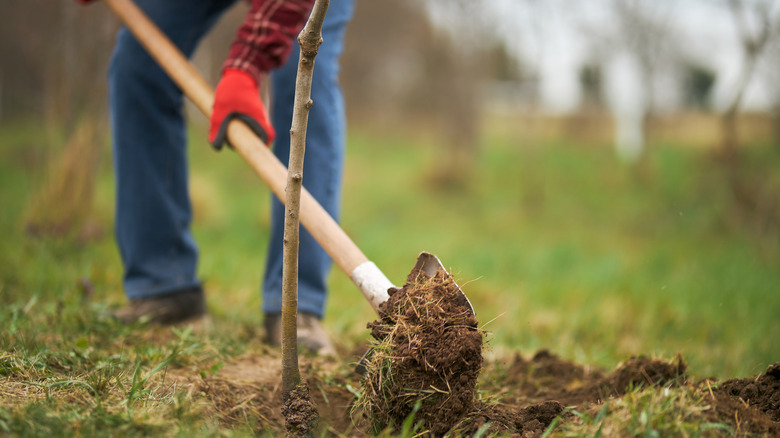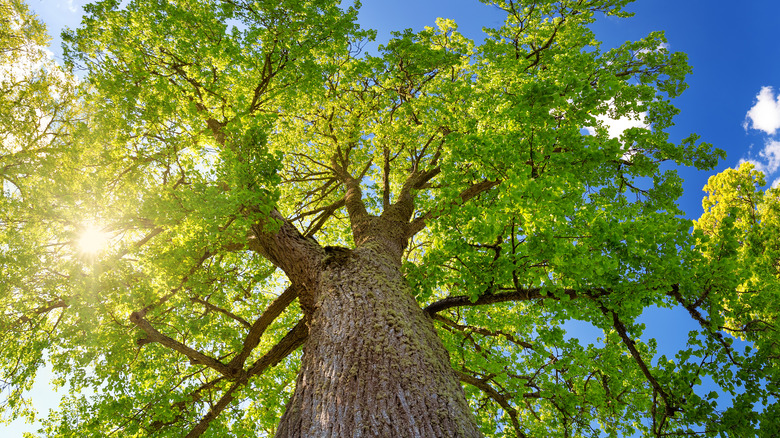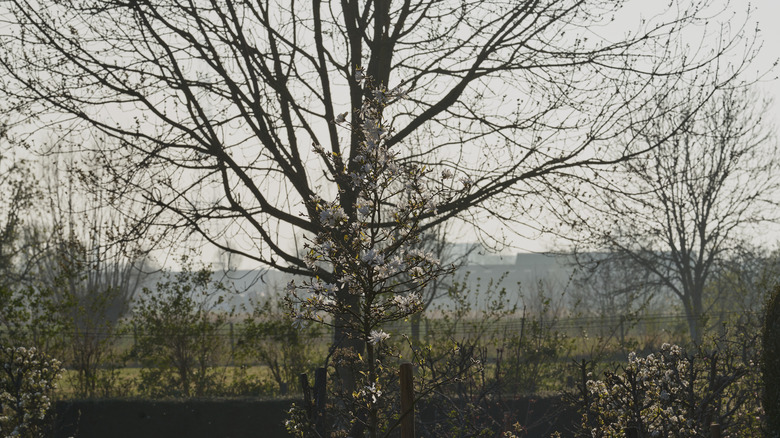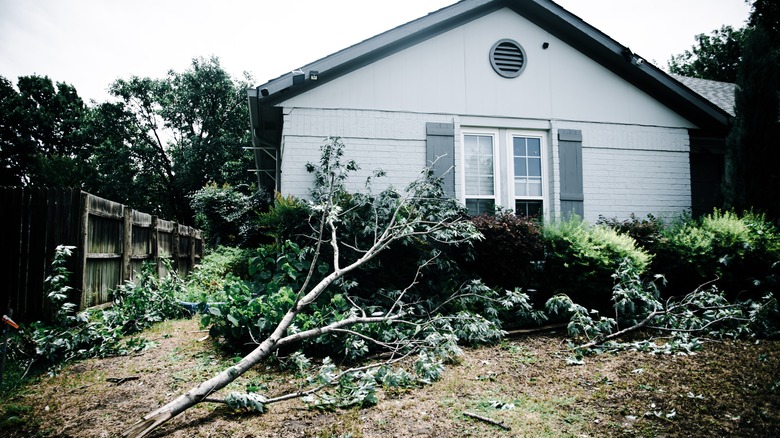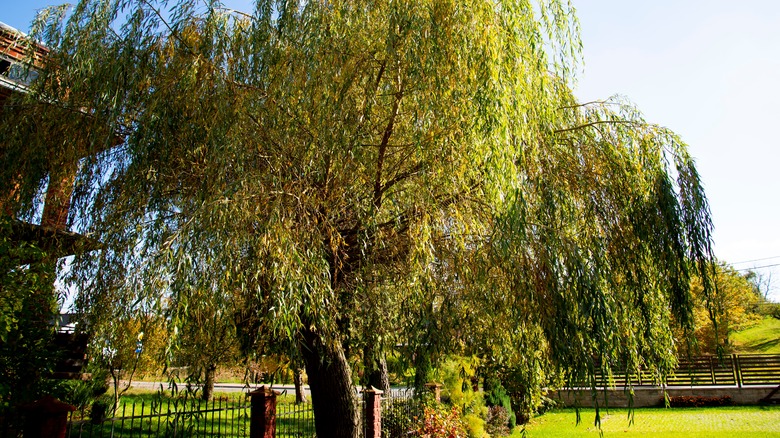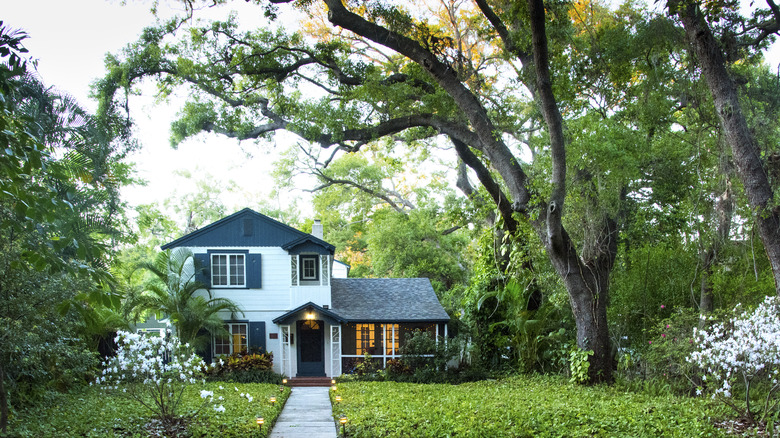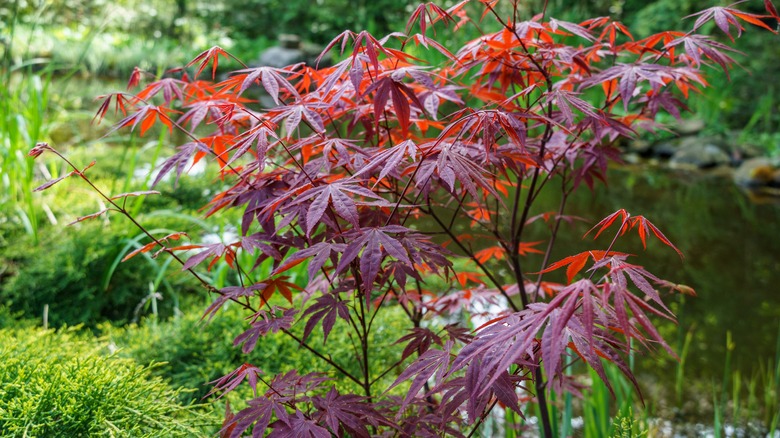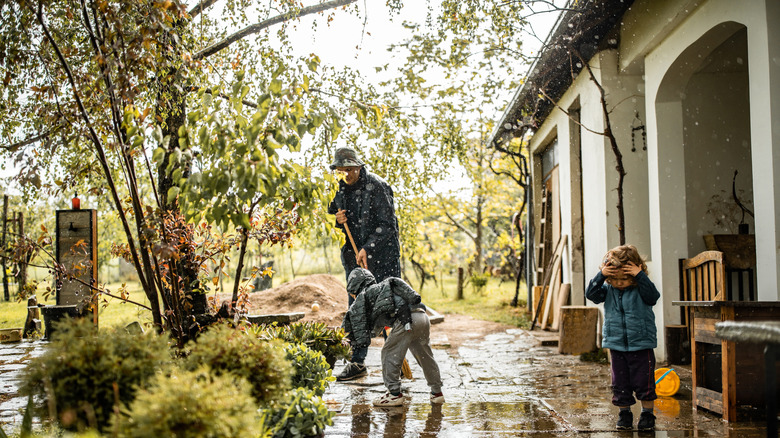Short-Lived Trees Vs Long-Lived Trees: Which Should You Plant In Your Yard?
When most of us are thinking about which trees to plant in our yard, we factor in considerations such as how big they will eventually be, whether or not they produce pretty flowers, and if they will need pruning. You may also think about which trees you should plant to attract butterflies and pollinators, or which trees require little maintenance. Few of us consider whether a tree is short-lived or long-lived, and it might come as a surprise to find out that these factors can have a huge bearing on whether or not the tree in question is appropriate for our climate, our region, and our circumstances.
When we look at the differences between long-lived and short-lived trees, there is much more that separates these two groups than their expected lifespans. Short-lived trees are typically fast-growing, which makes them much better suited to certain situations. For example, a fast-growing, short-lived tree will be more appropriate if you want to quickly create a natural shady spot in your yard, compared with a slow-growing long-lived tree that might take decades to reach a decent height. On the other hand, long-lived trees tend to be stronger and more stable, making them preferred for regions where storms are a common occurrence. Here we explain the defining factors of short-lived and long-lived trees, and look at the scenarios where each works best.
Plant long-lived trees for better drought resistance
If you live in a climate that experiences long dry spells, then planting a long-lived tree could make more sense than planting a short-lived tree. The reason for this is long-lived trees are typically more drought-resistant because they grow more slowly. Slow-growing trees require less moisture to sustain their growth, and they also develop more strength and resistance to unfavorable conditions, such as drought. Long-lived trees can also be a good option if you want to cut down on your water bill because they won't need supplemental watering as frequently as their short-lived counterparts. Their ability to withstand drought is one of the reasons aging trees in old forests and woodlands should be preserved. University of Michigan forest ecologist Tsun Fung Au explains to Anthropocene Magazine, "Given their high resistance to drought and their exceptional carbon storage capacity, conservation of older trees in the upper canopy should be the top priority from a climate mitigation perspective."
Linden trees (Tilia spp.) and oak trees (Quercus spp.) are both long-lived examples that have excellent drought resistance. Linden trees can live for more than 1,000 years, while oaks have a similar lifespan. Linden trees adapt well to a range of less-than-ideal conditions and, once well-established, can sustain themselves through drought. They prefer well-draining, fertile soil. Oak trees adapt really well to changing climate conditions, including drought. Once established, your oak can survive on rainfall alone.
Plant short-lived trees if you need privacy ASAP
Not everyone wants the solid barrier of a fence around their home since it can create a sense of isolation and block enjoyable views. However, privacy in the garden during the summer months when you want to spend time outdoors with the family is a priority for many homeowners. A great compromise is a tree or row of trees, which can offer privacy without completely obscuring the view. The canopy of a tree can also be useful for creating privacy from neighboring houses, so they can't see into your backyard from their first-floor windows. Short-lived trees in particular are great for this purpose. Since they tend to grow quickly, they can provide that much-needed privacy over the course of a few years.
One of the fastest-growing trees to plant for privacy in your yard is the black alder (Alnus glutinosa) which has a bushy appearance ideal for privacy screening. Gaining around 2 feet in height each year, the black alder tree will quickly shoot up to create a privacy barrier in your yard. As a deciduous tree, the black alder will lose its leaves in fall and remain bare through winter, allowing you to benefit from extra daylight and views throughout these seasons.
Plant long-lived trees if you live in a storm-risk region
Anyone who lives in a region where storms are a regular occurrence knows how troublesome it can be when falling trees and branches interfere with power lines or cause blockages on roads. One way to minimize the likelihood of this happening is to plant long-lived trees. Long-lived trees grow to be stronger than short-lived trees and are therefore better equipped to withstand strong winds. While short-lived trees have weak branches that can be easily broken, long-lived trees can survive serious storms entirely intact. Planting long-lived trees can help to protect your home, your family, and your neighbors in adverse weather conditions.
To prevent the likelihood of falling branches and trees during severe storms, avoid planting fast-growing, short-lived trees such as Siberian elm and silver maple. These trees have weak limbs that are prone to splintering during heavy winds. Instead, opt for slow-growing trees that have better resistance to storms. The best tree to grow in a storm-risk zone is the sand live oak (Quercus geminata), which was revealed in research conducted by scientists at the University of Florida to be the most wind-resistant tree species. These long-lived trees have a life expectancy of up to 500 years and fare best in deep, sandy soils. Other trees that can survive in extremely windy environments are the Southern magnolia, gumbo limbo, and bald cypress.
Plant short-lived trees if you want fast shade
If your garden lacks shade, your options include growing a tree with a large canopy or erecting a structure in your backyard. While a pergola might be a more instantaneous fix, it could also be a significantly more expensive choice. If you can wait just a few years, planting a short-lived tree is a good option. Short-lived trees can grow at surprisingly fast rates of up to 6 feet in a single year when young. Their canopies can not only provide shade for your family to safely enjoy the garden away from the glare of the sun, but they can also create shade for your home which may minimize cooling bills in the summer.
One fast-growing shade tree is the willow (Salix spp.). With a growth rate of more than 2 feet per year and a canopy that can span up to 70 feet wide, willow trees provide an attractive, dense shade in a relatively short space of time. Another excellent option is the eastern redbud (Cercis canadensis) which gains a phenomenal 4 to 6 feet in height each year. "For a fast-growing shade tree, it's hard to beat the redbud. I love to watch them bloom in spring and early summer, and their fall colors are stunning," says Lindsey Hyland, founder of Urban Organic Yield, via Homes & Gardens. With an ultimate canopy width of up to 35 feet, this is a colorful shade tree that fits in a small yard or space.
Plant long-lived trees if you want to combat climate change
A study published by Nature Communications has shown that long-lived trees are more beneficial for the environment because they store more carbon than short-lived trees. As trees age, they absorb more carbon from the atmosphere, which helps to reduce our carbon footprint. Terry Sunderland, a senior associate scientist with the Center for International Forestry Research (CIFOR) and professor in the Faculty of Forestry at Canada's University of British Columbia, commented to Forests News, "This study is further fuel for the argument that instead of focusing on forest and landscape restoration alone, we should also try and manage what forests we have much more sustainably by carefully planning what, how, and where we replant." Steve Voelker of the Department of Environmental and Forest Biology at Syracuse University New York echoed this sentiment to The Guardian. He said, "Carbon uptake rates of forests are likely to be on the wane as slow-growing and persistent trees are supplanted by fast-growing but vulnerable trees." You can do your part to tackle climate change and help the environment by planting long-lived trees instead of short-lived trees.
The Woodland Trust recommends growing long-lived trees like oaks and maples for their carbon-storing qualities. There are many different types of oak trees you can plant in your yard to combat climate change. These include the chestnut oak (Quercus montana), the cherrybark oak (Quercus pagoda), and the southern live oak (Quercus virginiana).
Plant short-lived trees if your soil is boggy
Since short-lived trees grow more quickly than long-lived trees, they typically have an increased need for moisture to support their rapid growth. This makes them the ideal choice for planting in a garden that is situated along a riverbank or near wetlands. The high moisture needs of short-lived trees make them better suited to wet soil or boggy conditions.
Consider planting the silver maple (Acer saccharinum) in your boggy soil, where it can grow to heights of up to 100 feet. This fast-growing tree is perfect for damp soil conditions, appearing along streams and rivers in its native habitat. The river birch (Betula nigra) is another tree that grows quickly and thrives in boggy soil. As you may expect from its name, this tree is commonly found growing along riverbanks where the soil is fertile and wet. With an expected lifespan of between 50 and 75 years, this short-lived tree forms an attractive shape with exfoliating bark for additional interest. Another long-lasting tree that will thrive in your damp yard is the bald cypress (Taxodium distichum). Typically this tree lives for hundreds of years, but there are examples that have survived more than 1,000 years.
Plant long-lived trees as future flood defenses
Long-lived trees can boost flood defenses, making them ideal for planting in regions where flood risk is high. It is older trees, which reach more than 100 years of age, that offer the greatest reductions in flood peak height. As climate change increases the risk of flooding in the future, the use of long-lived trees as a forward-thinking natural flood defense makes a lot of sense. Dr. Simon Dixon, from the University of Birmingham's Institute of Forest Research (BIFoR), said: "As our research shows, targeted tree planting and restoration can contribute to reducing flood risk. We believe that tree planting can make a big contribution to reducing flood risk, and should be part of a wider flood risk management approach, including conventional flood defences. Tree planting would represent an extra element that helps to slow down the arrival of rain water to vulnerable locations."
To help future generations tackle floods and improve their natural flood defense system, it can be helpful to plant long-lived trees now. Broadleaf trees such as oaks and elms help to minimize flood risks with their canopy cover, which can intercept rainfall and prevent as much as 30% of the water from ever reaching the ground. Other long-lived trees that can be used as future flood defense systems include pines, redwoods, and yews.
